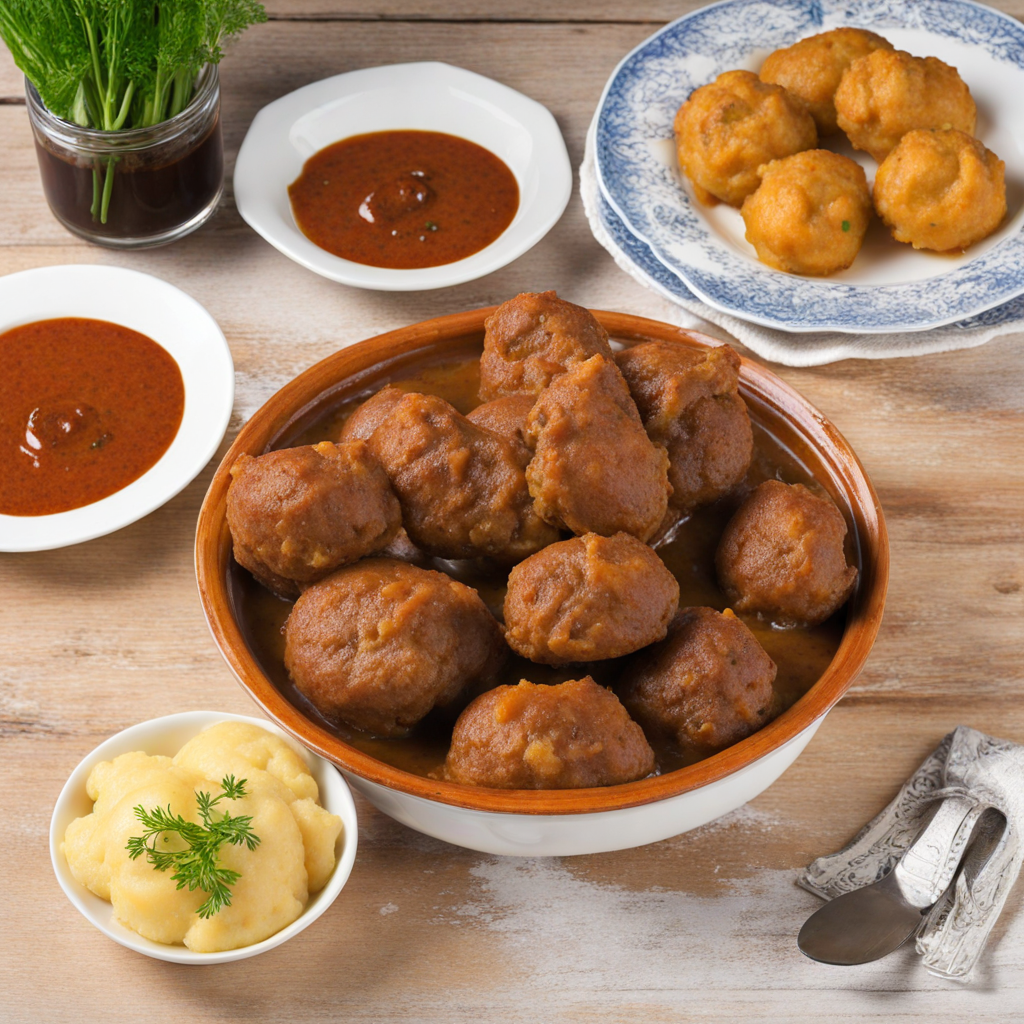Krémes
Krémes is a beloved Hungarian pastry that captivates the senses with its delicate layers and rich flavors. This delightful dessert typically consists of two layers of flaky puff pastry encasing a luscious, creamy custard filling. The texture is a harmonious blend of crispiness from the pastry and smoothness from the cream, creating a delightful contrast that makes each bite an indulgent experience. Often dusted with powdered sugar on top, Krémes not only pleases the palate but also presents beautifully, making it a feast for the eyes as well. The custard filling of Krémes is traditionally made with eggs, milk, sugar, and vanilla, resulting in a velvety cream that is both sweet and subtly aromatic. The egg yolks provide richness, while the milk adds a comforting creaminess. Some variations may include a hint of lemon zest or other flavorings, enhancing the overall taste profile and bringing a refreshing brightness to the dessert. The combination of the flaky pastry and the smooth custard creates a delightful mouthfeel that lingers long after the last bite. Krémes is often enjoyed with coffee or tea, making it a perfect treat for afternoon gatherings or special occasions. Its origins can be traced back to traditional Hungarian bakeries, where it has been a staple for generations. Whether you enjoy it at a café or attempt to make it at home, Krémes offers a delightful journey into the rich tapestry of Hungarian pastry-making. The experience of savoring this dessert is not just about taste; it’s about indulging in a piece of Hungary’s culinary heritage that continues to enchant locals and visitors alike.
How It Became This Dish
The Sweet Saga of Krémes: A Hungarian Culinary Delight Krémes, a beloved dessert from Hungary, is a delightful pastry that has captured the hearts and palates of many. With its layers of flaky pastry, rich custard filling, and a dusting of powdered sugar, this indulgent treat is not just a feast for the taste buds but also a testament to Hungary’s rich culinary history and traditions. This exploration of Krémes delves into its origins, cultural significance, and how it has evolved over time. #### Origins and Early History The roots of Krémes can be traced back to the late 19th century, a period when Hungary was part of the Austro-Hungarian Empire. This era was marked by a flourish of culinary innovation, with chefs combining various regional influences to create distinctive dishes. Krémes is believed to have emerged in the bustling markets and cafés of Budapest, where the mingling of cultures and flavors set the stage for this exquisite dessert. The word "Krémes" itself derives from the Hungarian term for "creamy," which aptly describes its rich filling. The dessert is essentially a variation of the French "mille-feuille," known for its layers of puff pastry, but the Hungarian version incorporates a custard cream that elevates its richness and texture. It is this custard, often made with eggs, milk, sugar, and vanilla, that is the heart of Krémes, giving it a lusciousness that is both satisfying and comforting. #### Cultural Significance In Hungary, Krémes is more than just a dessert; it represents a cultural heritage steeped in tradition and familial ties. It is often served at festive occasions and celebrations, from birthdays to weddings, symbolizing joy and togetherness. The preparation of Krémes can be a communal activity, with family members gathering to bake and share recipes that have been passed down through generations. The dessert also plays a role in Hungarian café culture, where it is commonly enjoyed alongside a cup of strong coffee or tea. Cafés in Budapest have played a significant role in the social fabric of the city, serving as meeting places for intellectuals, artists, and everyday citizens. Krémes, with its elegant presentation and delightful flavors, has become a staple in these establishments, embodying the spirit of Hungarian hospitality. #### Evolution Over Time As the 20th century unfolded, Krémes began to evolve. While traditional recipes remained popular, innovative bakers started to experiment with new flavors and textures. The classic vanilla custard filling was often complemented by variations such as chocolate, lemon, or even fruit-infused creams, catering to evolving tastes and preferences. This adaptability is a hallmark of Hungarian cuisine, which often embraces seasonal ingredients and local flavors. The post-World War II era saw a resurgence of interest in traditional Hungarian desserts, as the country sought to reclaim its culinary identity amidst the challenges of modernization. Krémes, with its rich history and comforting qualities, became a symbol of resilience and nostalgia. Bakeries across Hungary began to feature Krémes prominently, and it soon became a national favorite, transcending regional boundaries. #### Krémes in Modern Times Today, Krémes remains a cherished dish in Hungary, celebrated not only for its taste but also for its cultural significance. It is common to find Krémes in bakeries and pastry shops throughout the country, and it continues to be a popular choice at celebrations and family gatherings. The dessert has also made its way into the hearts of food enthusiasts around the world, thanks to globalization and the rise of Hungarian cuisine on the international stage. With the advent of social media, Krémes has found a new platform for appreciation. Food bloggers and culinary influencers showcase their own takes on this classic dessert, often highlighting its craftsmanship and the artistry involved in its preparation. This exposure has led to a renewed interest in traditional Hungarian desserts, encouraging a new generation of bakers to explore and experiment with Krémes. #### The Recipe: A Culinary Art Making Krémes at home can be a rewarding experience, allowing individuals to connect with their heritage while indulging in a delicious treat. Traditional recipes typically involve making a flaky pastry known as "pâte feuilletée," which is layered and baked to create a crisp texture. The custard filling is made by slowly cooking milk, sugar, and eggs until thickened, then cooling it before layering it between the pastry sheets. The final touch—a generous dusting of powdered sugar—adds an elegant finish. While the classic version remains popular, modern interpretations have emerged, with variations that incorporate different flavors, such as chocolate or coffee. Some bakers even experiment with the shape and presentation, turning Krémes into individual portions or creative dessert platters. This evolution reflects the dynamic nature of food culture, where tradition and innovation coexist harmoniously. #### Conclusion Krémes is more than just a dessert; it is a symbol of Hungarian identity and culinary heritage. From its origins in the lavish cafés of Budapest to its status as a beloved treat across the nation, Krémes embodies the spirit of celebration, hospitality, and resilience. As it continues to evolve and adapt to contemporary tastes, Krémes remains a sweet reminder of Hungary's rich history and the enduring power of food to bring people together. Whether enjoyed in a bustling café or made at home with loved ones, Krémes is a delicious testament to the artistry and tradition of Hungarian gastronomy.
You may like
Discover local flavors from Hungary







